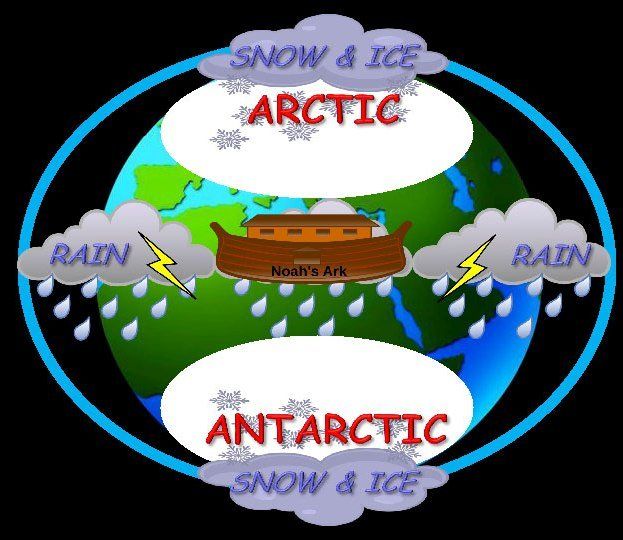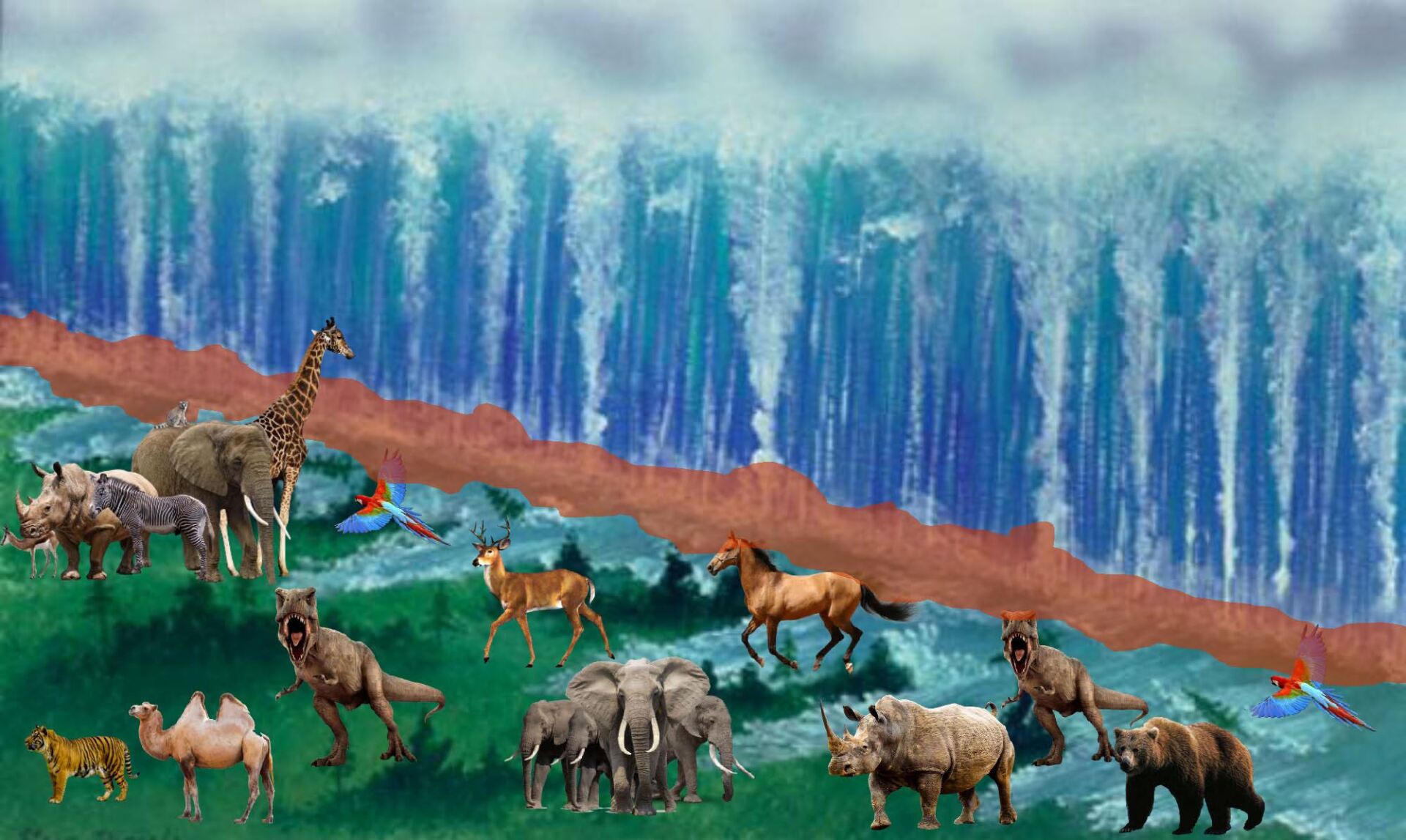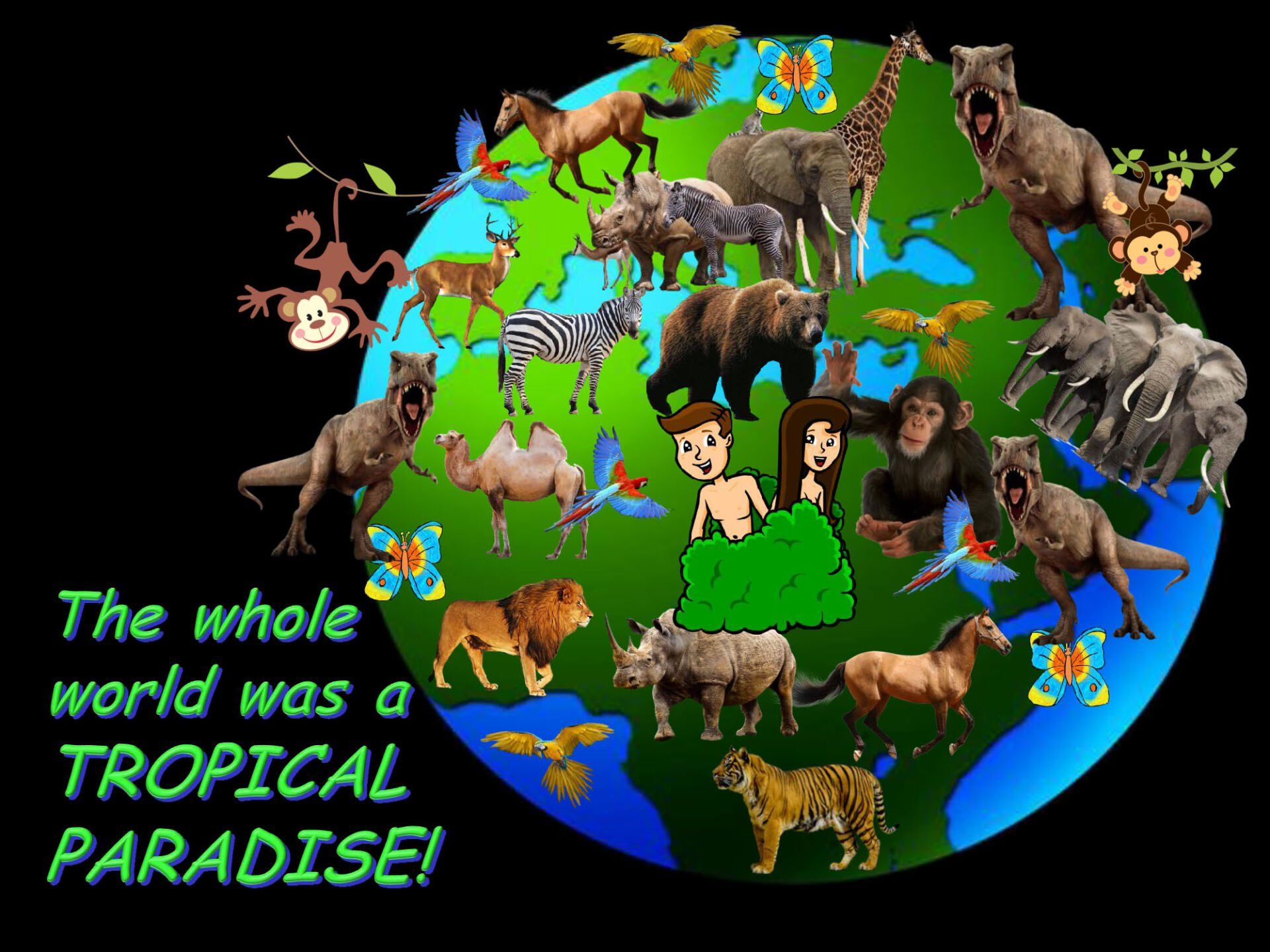FROZEN CATASTROPHE!
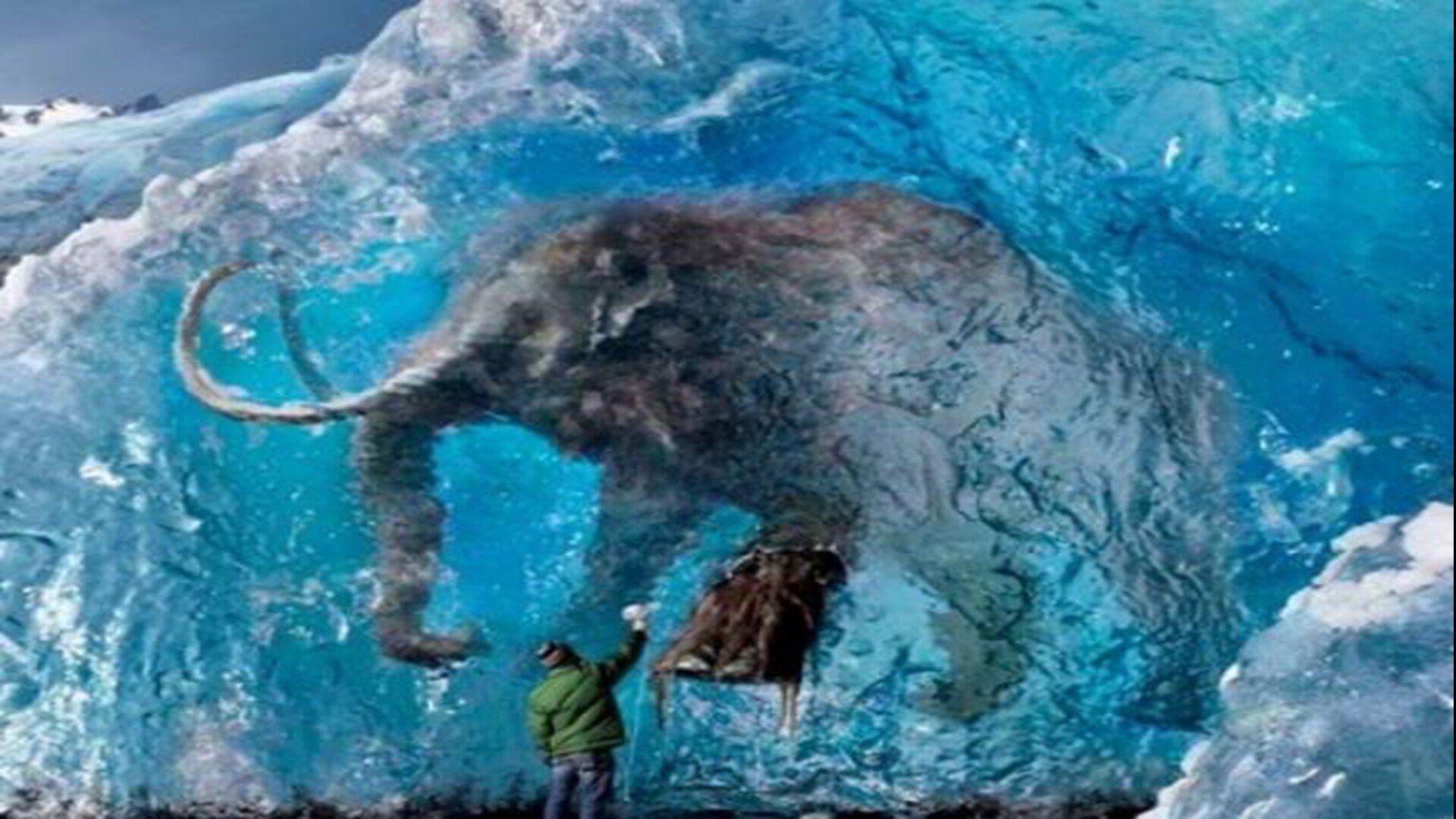
Imagine a huge woolly mammoth peacefully munching on fresh grass and sweet buttercups, when suddenly, the temperature drops to -250 degrees Fahrenheit and the mammoth turns into a frozen statue. It happens so fast that the creature doesn’t have time to swallow or even move.
Sound impossible?
Meet the Berezovka Mammoth which is on display in the Zoological Museum in St. Petersburg, Russia!
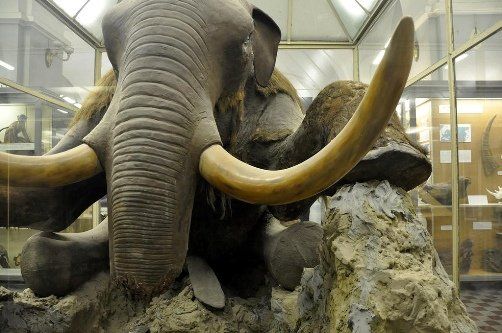
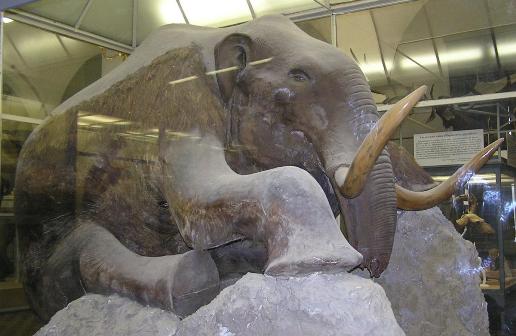
This huge tropical creature was discovered in northern Siberia in 1900. Part of its head was protruding above the frozen tundra and had been partially eaten by wolves . . . but the rest of the body was remarkably preserved because of instant freezing. The animal from the past was so quickly frozen that it still had unchewed grass in its mouth and 24 pounds of fresh grass, tropical leaves, and flowers in its stomach that had not yet begun to digest. Apparently the weight of the ice crystals that fell upon the mammoth was so great that it broke the back hips and it was found frozen in a sitting position as it is shown in the museum.
CATASTROPHIC EVENT:
The instant death and preservation of the Berezovka Mammoth was not from the effects of a normal snow or ice storm. Despite the claims of some, it didn’t die a natural death during the ice age. Tropical animals of this size need an incredible amount of food daily (between 300 and 400 pounds) which would not have been available if the arctic areas were frozen as they are now. Elephants have been known to die because of cold weather. Their trunks are especially sensitive to frigid temperatures and they cannot endure long periods in freezing atmospheres.
Whatever happened to the Berezovka Mammoth and thousands of other tropical animals occurred very quickly. Remains of lions, antelopes, elephants and even crocodiles have also been found in the frozen tundra of the Arctic Circle.
To grasp what caused this incredible and sudden deep freeze that instantly engulfed that part of the world, we need to understand what the surface and weather of earth was like prior to that catastrophic moment.
A LOOK AT THE PAST:
You may be surprised to learn that the Bible describes a world that was entirely different than the one we live in today. Before the great Flood described in Genesis chapters 6 and 7, the world was a tropical forest of immense size from top to bottom not just at the equator like today.
A WORLD WITHOUT RAIN:
We read in Genesis 2:5-6 — ” . . . for the LORD God had not caused it to rain upon the earth . . . but there went up a mist from the earth, and watered the whole face of the ground.”
NO RAIN . . . no wonder the people mocked Noah when he warned them of coming rain and the judgment of a great flood. They had never seen rain. The very idea of clouds and thunder was beyond their imaginations. The moisture that watered the earth came from below in the form of a mist . . . not from a cloudy sky . . . and the scriptures declares that it watered “the whole face of the ground” . . . the entire surface of the planet was well watered . . . there were no deserts . . . just a lush tropical world from North Pole to South Pole. Imagine the numbers of animals that could live in such an environment!
A WORLD WITHOUT DIRECT SUNLIGHT:
Scriptures also indicate that direct sunlight did not appear on earth until AFTER the Flood. God established a covenant with Noah and promised to never again destroy the world with such a terrible flood . . . “And God said, this is the token of the covenant which I make between Me and you and every living creature that is with you, for perpetual generations: I do set my BOW in the cloud, and it shall be for a token of a covenant between Me and the earth.” Genesis 9:12-13
Before the Flood there was plenty of moisture as the mist came up and watered the entire surface of the earth . . . but there was no rain bow. What was missing? What does it take to make a beautiful rainbow? The answer is quite simple . . . moisture and the direct rays of the sun.
In defense of Noah who is often criticized for getting drunk, I believe there was probably no fermentation before the flood . . . the harmful rays of the sun did not reach the surface of the earth. Noah planted a vineyard and drank of the wine but he may have never seen or tasted fermented wine before. (Genesis 9:20-21) Things on planet earth had really changed after the Flood!
A WORLD WITH LONGER LIFE:
Another indication that destructive radiation from the sun did not effect planet earth is the fact that people lived much longer in those days than they do now.
Adam lived 930 years.
Noah lived 950 years.
Methuselah lived an incredible 969 years.
Then, suddenly, after the Flood, human life-span began to decline to the point that man now has an expected live-span of approximately “three score and 10 years” (70 years plus or minus).
It is probable that animals also enjoyed much longer life than they do now.
A WORLD WITH LARGER ANIMALS AND PLANTS:
If animals, like humans, lived considerably longer before the flood, we should not be surprised that many of them would have grown much larger . . . reptiles continue to grow as long as they live. This would explain the huge size of pre-flood dinosaurs.
Speaking of dinosaurs, two of the huge reptiles have been discovered in the Antarctic! “Working is some of the planet’s harshest conditions, fossil hunters have found two completely new species of dinosaurs in Antarctica. This increases to eight the number of dinosaur species found on the perpetually frozen southern landmass.” National Geographic News, March 9, 2009
INCREASED OXYGEN IN THE PRE-FLOOD ATMOSPHERE:
Scientist have proved that there was considerably higher atmospheric pressure and higher oxygen and carbon dioxide in the world before the flood. Air bubbles trapped in amber (fossilized pre-flood tree resin) still retain higher amounts of oxygen and carbon dioxide. Amber is a semi-precious stone, commonly used in jewelry. According to Time Magazine published November 9, 1987, page 82, bubbles of air in Amber consistently have an oxygen content that is 50% higher than the present air we now breathe. This would have allowed pre-flood animals and reptiles to grow to amazing sizes:
A fossilized giant dragonfly was discovered in Italy with a 50 inch wingspan.
A fossilized giant tarantula spider was discovered that was about 18 inches long. Giant cockroaches over 18 inches in length have also been found in the fossil record. Speaking of big insects, the fossil of a gigantic centipede was discovered in Germany that measured 8 1/2 feet long!
A giant turtle skeleton is on display at the Yale Museum. This huge turtle was over 10 feet long!
A giant buffalo horn with a spread of 12 feet is on display in the Creation Evidence Museum in Glen Rose, Texas. A gigantic donkey fossil was also excavated near Lubbock, Texas. It was a remarkable 9 feet high at the shoulder.
Hundreds of other examples could be sited including huge pre-flood beavers over 8 feet long.
The result of higher atmospheric pressure and higher oxygen content resulted in huge animals and huge plants and trees.
A WORLD-WIDE TROPICAL PARADISE:
Huge animals would require huge amounts of food. And the pre-flood world was filled with huge plants that apparently made tropical forests all over the earth. Scientists are amazed at what they are bringing up from core samples taken below the frozen wastelands of the Arctic and Antarctic.
FOX NEWS: Antarctica Once Covered With Palm Trees, Scientists Discover
Fox News reported on August 2, 2012: “The surprising discovery came from a study of drill cores obtained from the seafloor near Antarctica. The results, published in the journal Nature, show that warm ocean currents and high carbon dioxide (CO2) levels in the air boosted temperatures, allowing tropical vegetation to grow where visitors today meet only icebergs and freezing cold.”
CBS NEWS: Study: North Pole Was Once Tropical
May 31, 2006: “Scientists have found something about the North Pole that could send a shiver down Santa’s spine: It used to be downright balmy . . . a lot like Miami with alligator ancestors and palm trees.”
One could ask the question: How was the world once covered with tropical forests? What was different in times past than what we see today? Again, the Book of Genesis gives us the answer:
A WORLD SHELTERED BY A HIGH ALTITUDE MOISTURE BARRIER:
The pre-Flood world was apparently covered with a high altitude moisture barrier very similar to the canopy that can be observed above the planet Saturn and other planets. This canopy of water in the stratosphere is described in Genesis 1:6-8 — “And God said, Let there be a firmament in the midst of the waters, and let it divide the waters from the waters. And God made the firmament, and divided the waters which were under the firmament from the waters which were above the firmament . . . “
“Firmament” is not a word which is commonly used today but Genesis 1:20 gives us a good description of just what the firmament referred to — ” . . . let the fowl fly above the earth in the open firmament of heaven.”
The Lord placed the firmament or sky BETWEEN the waters . . . there was SKY ABOVE THE WATERS on earth and there was SKY BELOW THE WATERS that were above the earth. After the original creation there was apparently a water canopy in the stratosphere, high above the surface of the earth. This canopy or vapor barrier would have made the entire earth like a gigantic terrarium . . . what scientists refer to a “greenhouse effect.” Temperatures would be warm and uniform all over earth and plants would have grown to an immense size. Animals would have been protected from the harmful rays of the sun and they too, would have grown much larger that what we see on earth today.
The world that Adam and Noah walked upon was totally different than the world we live in today. After the Flood, the life-span of man and animals became shorter and shorter and we have become victims of diseases that probably were not present under the protective vapor canopy.
